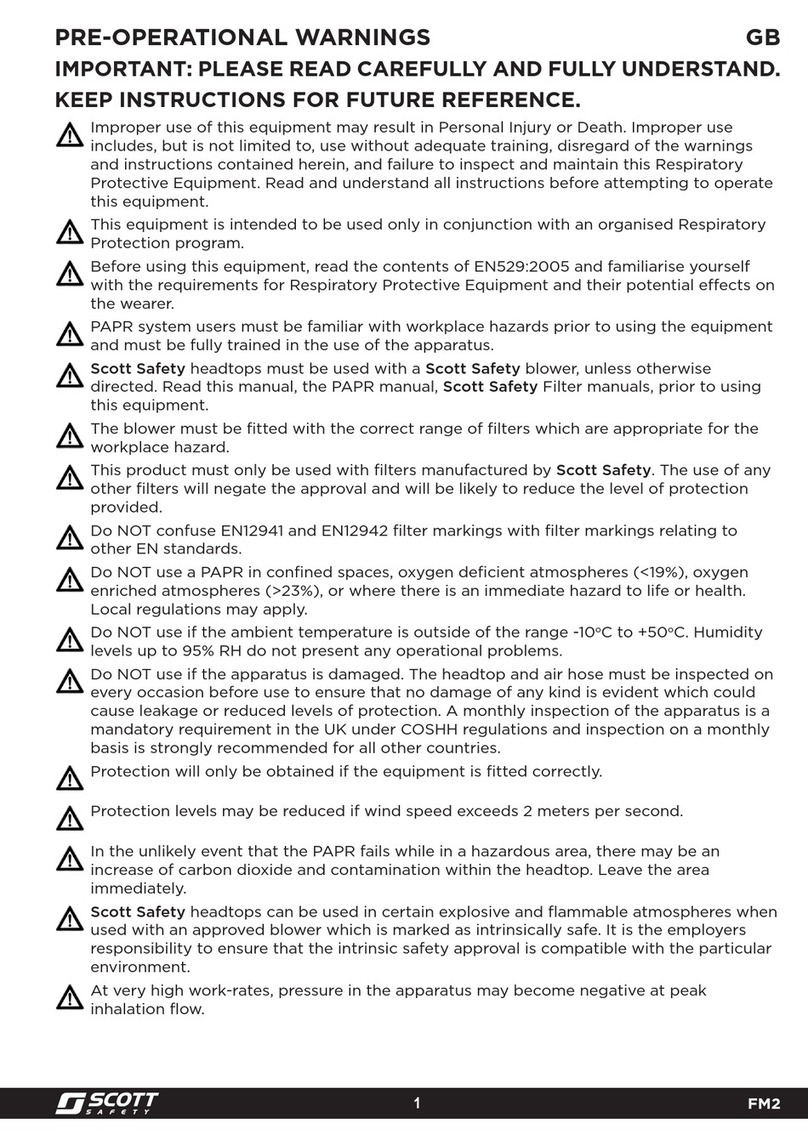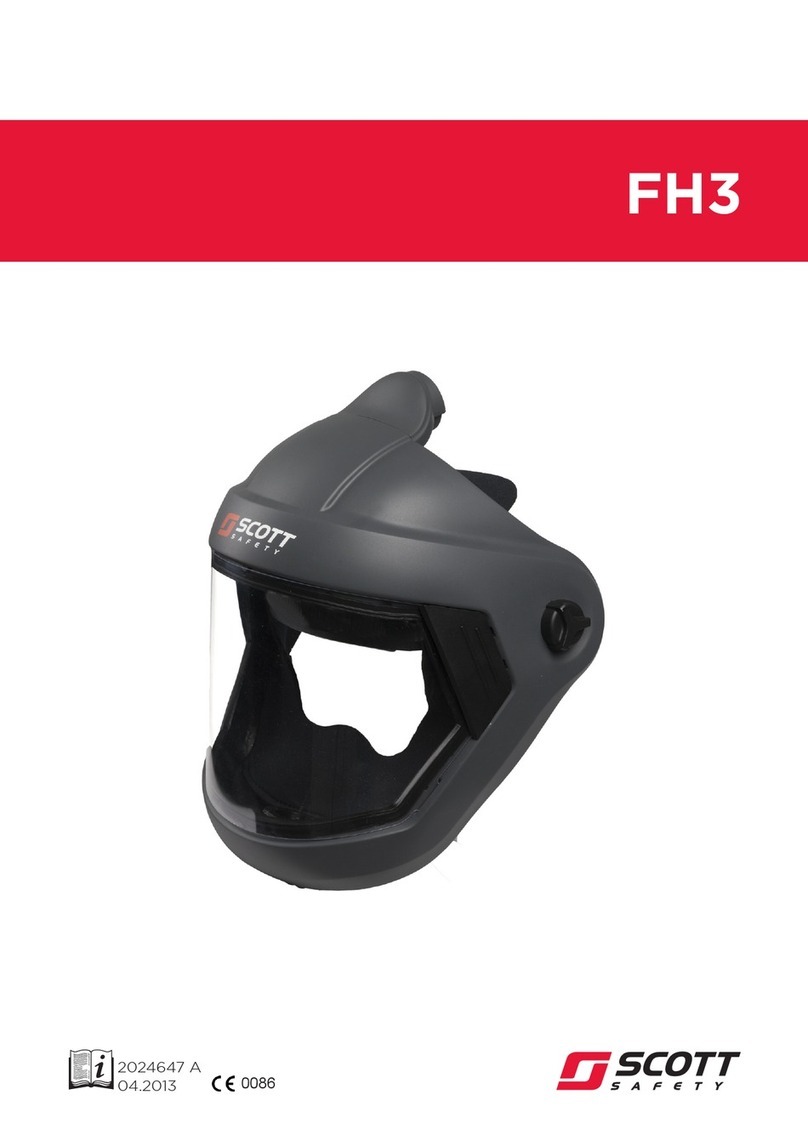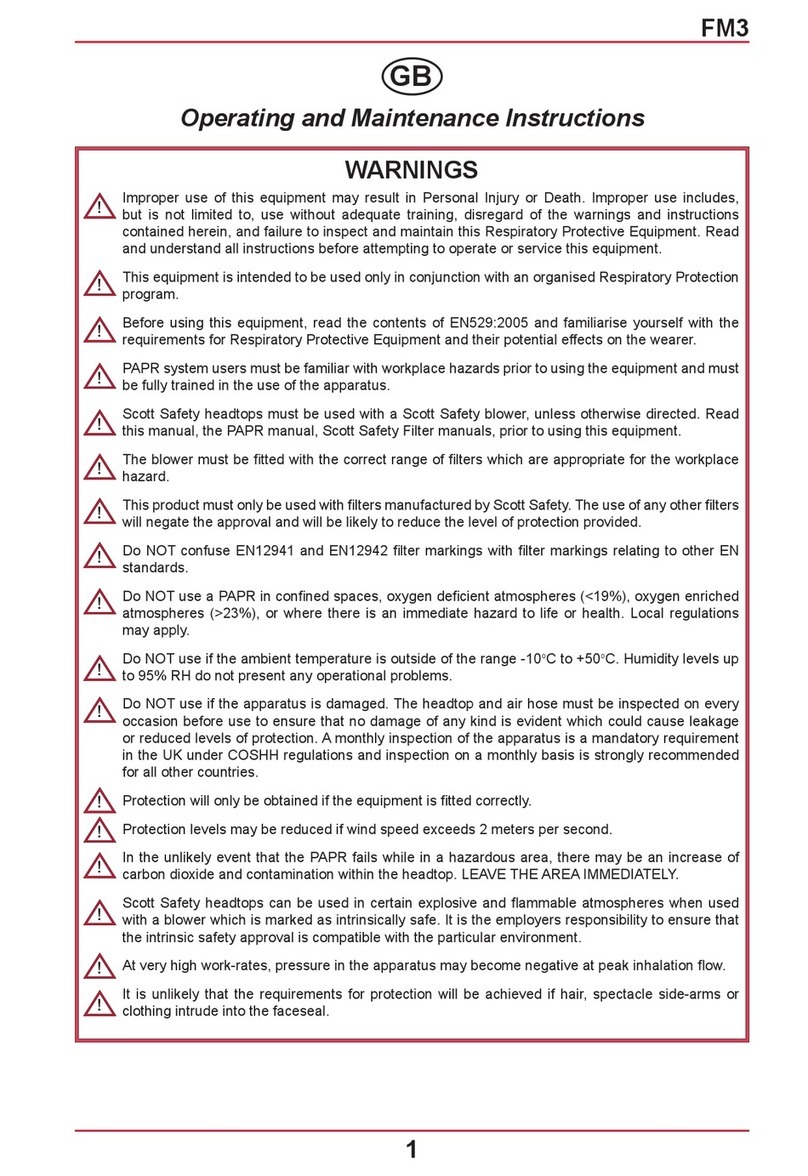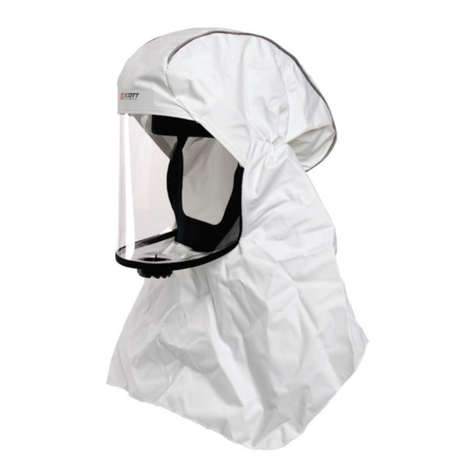
7
FH6 & FH61
DOFFING
• Once free of any hazard switch off the
blower
• Loosen the helmet handwheel
• Pull the face seal away from under the
chin and off the face
• Lift the headtop away and off of the head
• Place the headtop onto a clean surface
• Remove the PAPR in accordance
with the Operating and Maintenance
instructions
• Proceed with after use cleaning and
storage
CAUTION
DO NOT REMOVE THE HEADTOP UNTIL
YOU ARE IN A SAFE AND HAZARD
FREE ZONE
AFTER USE CLEANING
• Disconnect the breathing hose from the
blower
• Inspect the headtop for worn, ageing or
damaged components
• Carefully wipe clean the headtop with a
warm water solution containing a mild
detergent
• It is recommended that headtop visors
be wiped clean with Distel® wipes
• If necessary, wash the outside of
the breathing hose carefully using
warm water solution containing a mild
detergent
• Ensure the breathing hose connections
are free from all dirt or debris that could
prevent an effective seal with the blower
Once clean all components must be left to
dry naturally.
Note
If during use the equipment may have
become contaminated by hazardous
substances, the contamination must
be identifi ed and properly removed or
the contaminated components must be
replaced before next use.
Disposal of the contaminated components
must be carried out in accordance with
local regulatory requirements.
STORAGE
Once all the components are clean and dry
store in a clean environment.
SPARES
Replacement parts and accessories may
be ordered through Scott Safety customer
services. The department can also provide
general information on other Scott Safety
products.
Scott Safety
Pimbo Road, West Pimbo,
Skelmersdale, Lancashire,
WN8 9RA, England
www.scottsafety.com
Tel: +44 (0) 1695 711711
Fax: +44 (0) 1695 711775
WARRANTY
The products manufactured at our factories
in Skelmersdale and Vaasa carry a warranty
of 12 months (unless stated otherwise).
This includes parts, labour and return to site
The warranty period runs from the date of
purchase by the end user.
These products are warranted to be free
from defects in materials and workmanship
at the time of delivery. Scott Safety will be
under no liability for any defect arising from
wilful damage, negligence, abnormal working
conditions, failure to follow the original
manufacturer’s instructions, misuse or
unauthorised alteration or repair.
Evidence of purchase date will need to be
produced for any claims arising during the
warranty period. All warranty claims must
be directed through Scott Safety customer
services and in accordance with our sales
return procedure.





































